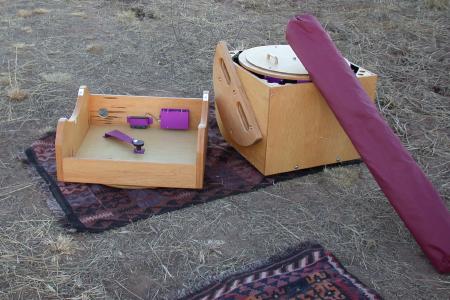
Transporting a big dob and setting it up is where the use of a telescope this size becomes a serious commitment. Setup and takedown are about 10-15min, add in the need to collimate the scope each time. This, of course, becomes smoother with practice and the development of routine. Finding where to put everything, how to pack the scope and ancillary equipment in the vehicle. All of the trivia that we who regularly use portable scopes require to make this task reasonable.
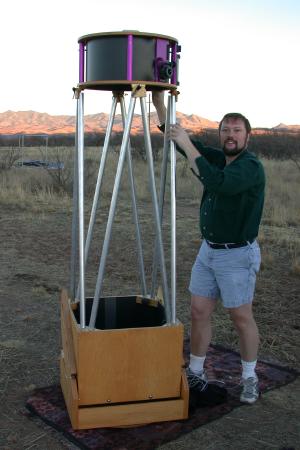
The reward is well worth the effort. Seeing images in the eyepiece comparable to the Digitized Sky Survey. The spiral arms of M51 are readily apparent. My favorites, the planetary nebulae shown the green colors of ionized oxygen and detail in galaxies, globular clusters are awesome.
Above: Setup begins by removing the scope from the vehicle. This scope is HEAVY but I can just do this as a one person lift, moving the mirror box, then the rocker box to the rug laid on the ground. I set them together and then set aside the secondary cage.
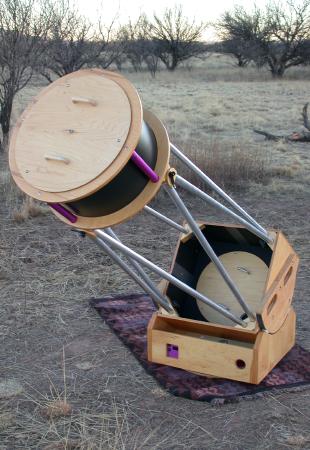
The truss tubes are then clamped into the mirror box and the secondary cage is set on top and clamped into position. The scope is stable through this operation as it is back heavy and tends to point straight up. Once the secondary cage is in place the scope is close enough to balance to be moved to any needed position for installation of the shroud, encoders and finder.
The mirror cover is left in place until everything is assembled to protect the primary from the many things that could easily fall on it.
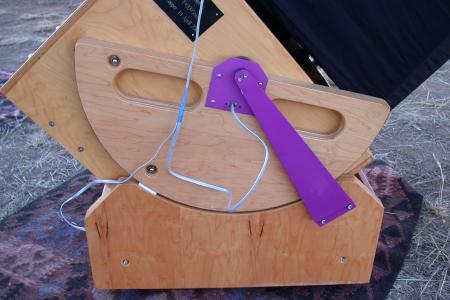
The final touches are pulling the shroud into place and setting up the encoders. The arm for the elevation encoder fits quickly into place with two 1/4"-20 cap screws that thread into brass inserts into the side of the rocker box.
These photos were taken while setting up at Las Cienegas for a wonderful night with many others of the TAAA on 12 Jan 2002.
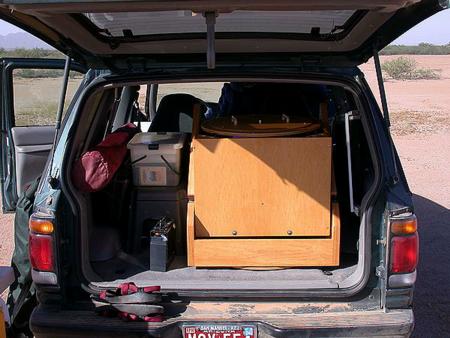
As mentioned above part of the challenge is to pack it all neatly in the vehicle. Part of this was by design and part just worked out with experience. One design specification was for the scope was to fit into the back of a two door Ford Explorer without dropping the rear seats, this was achieved. Some of the chance elements; finding a ladder that fits along the side of the vehicle neatly, that the other basic gear, eyepiece case, accessory case and library, stack neatly in the remainder of the cargo compartment.